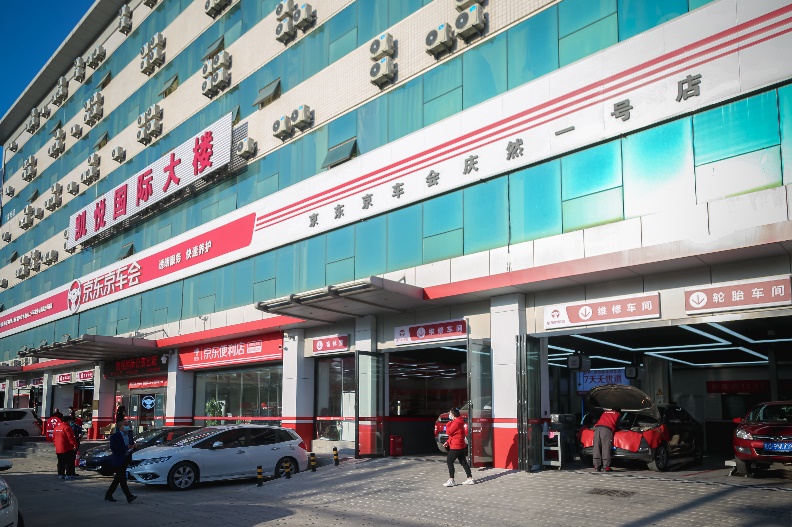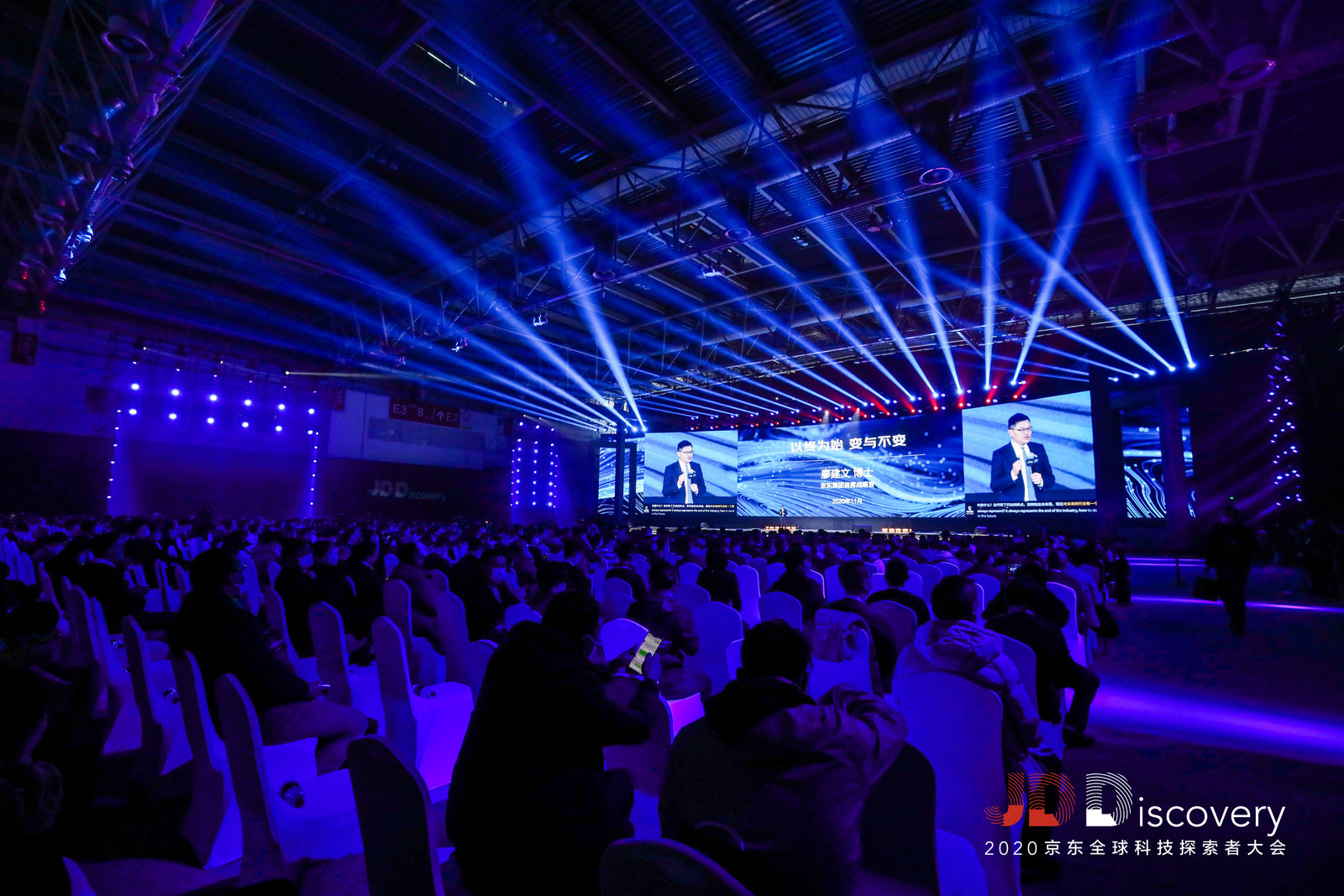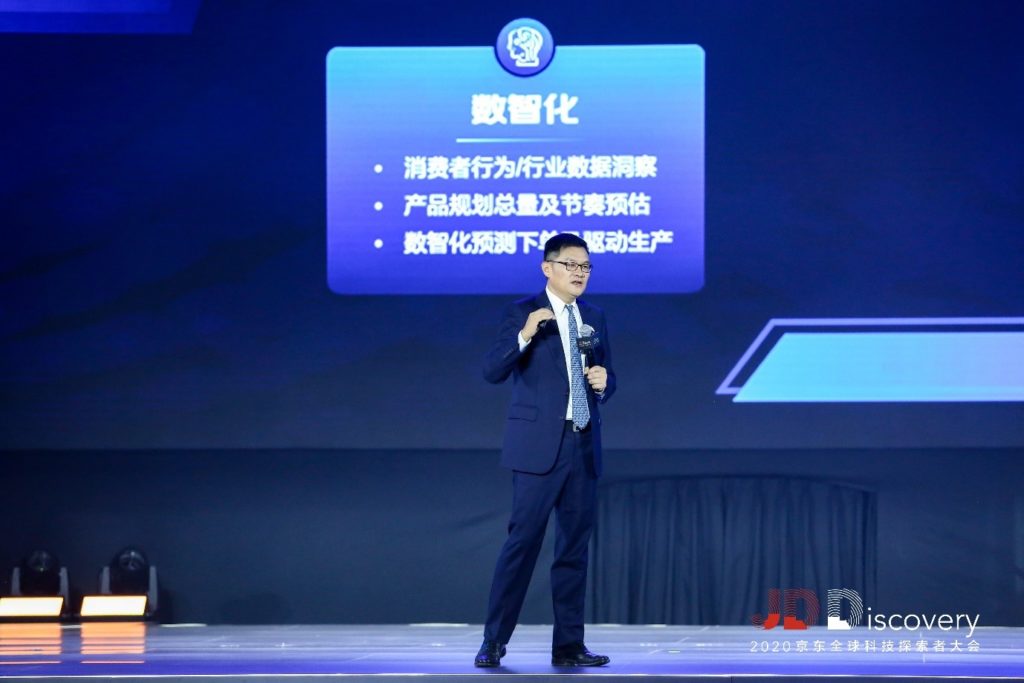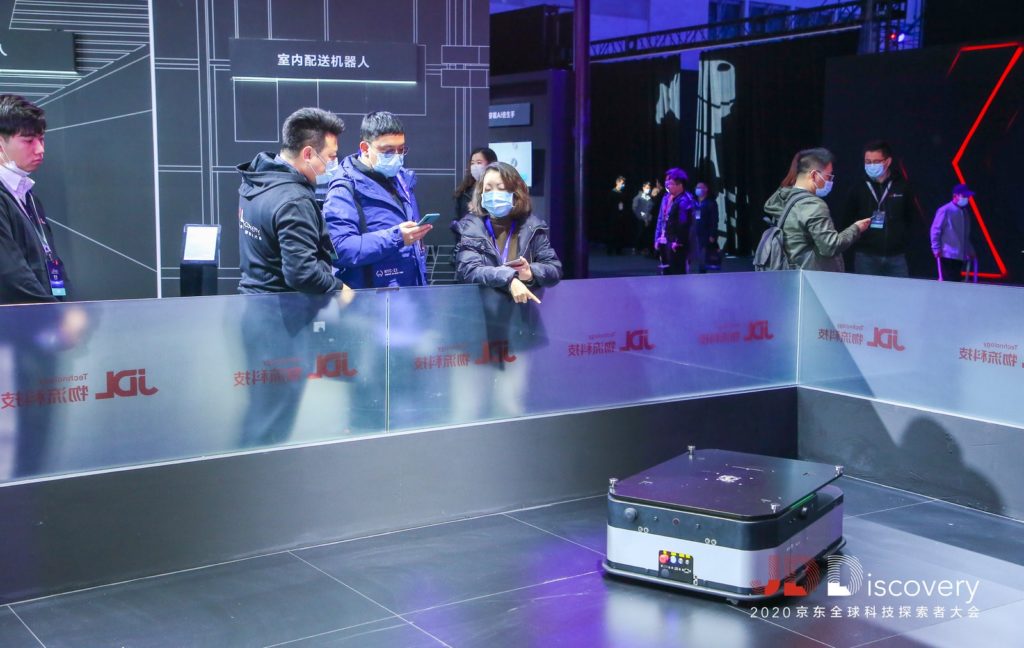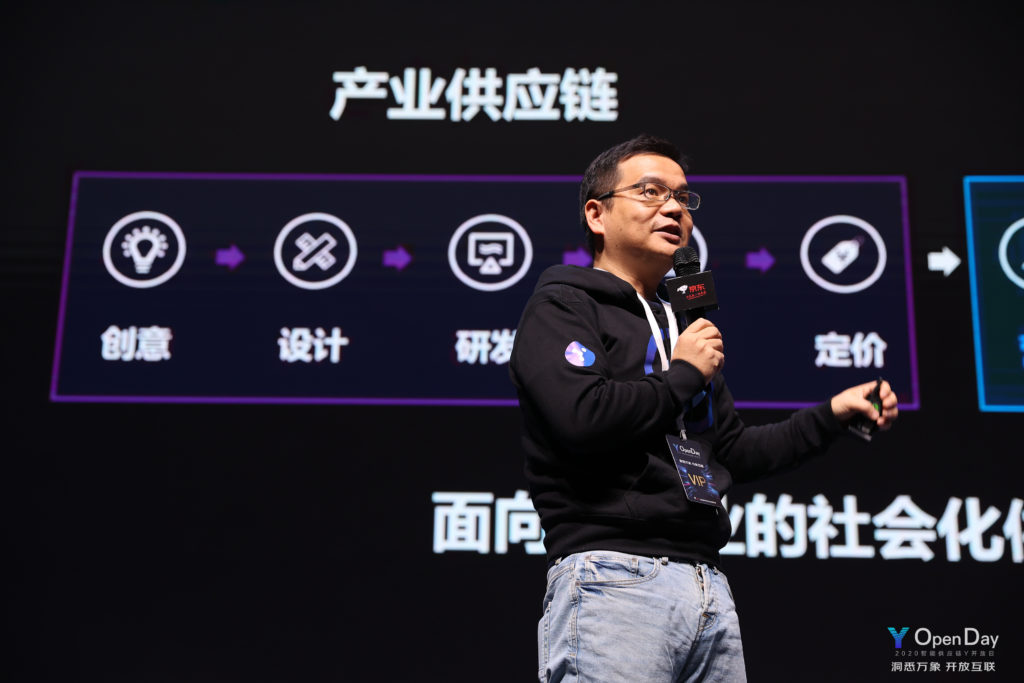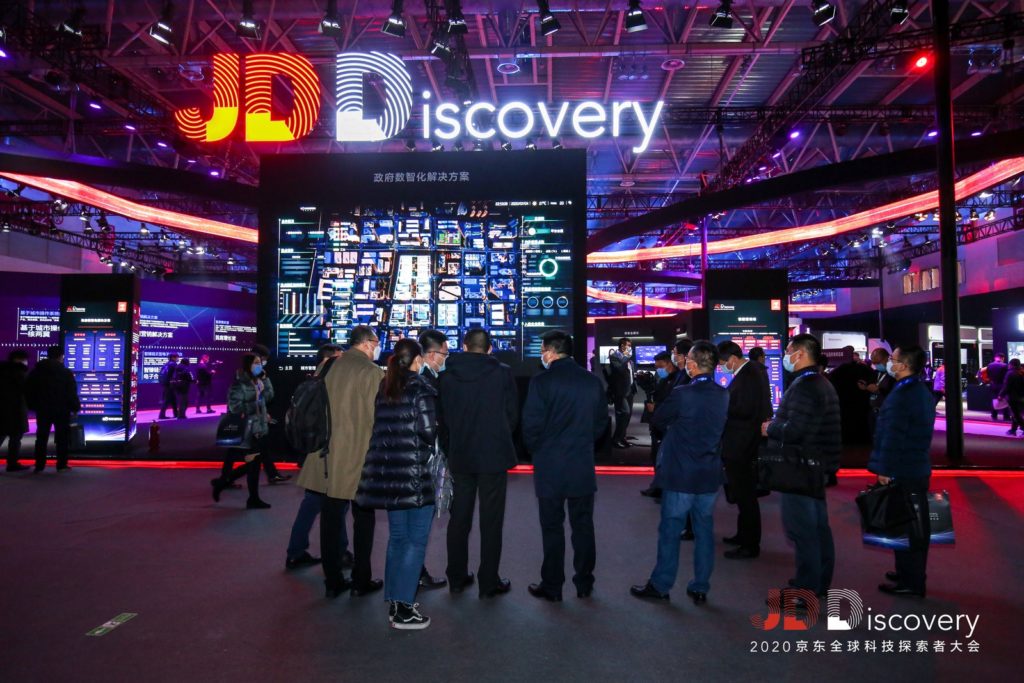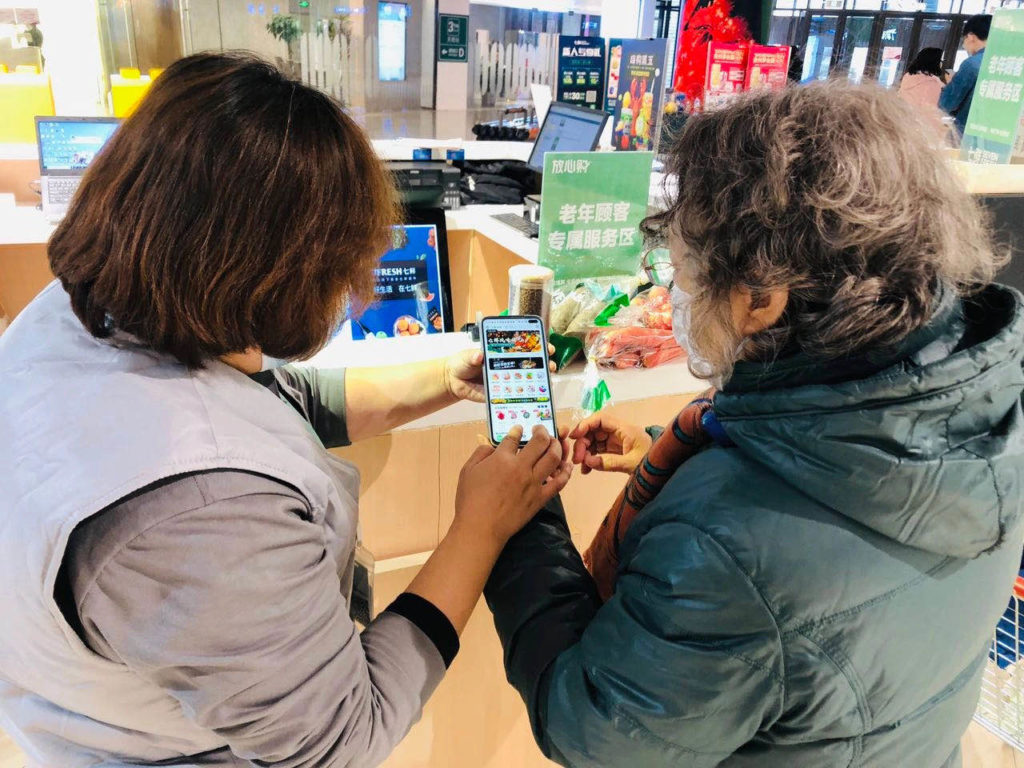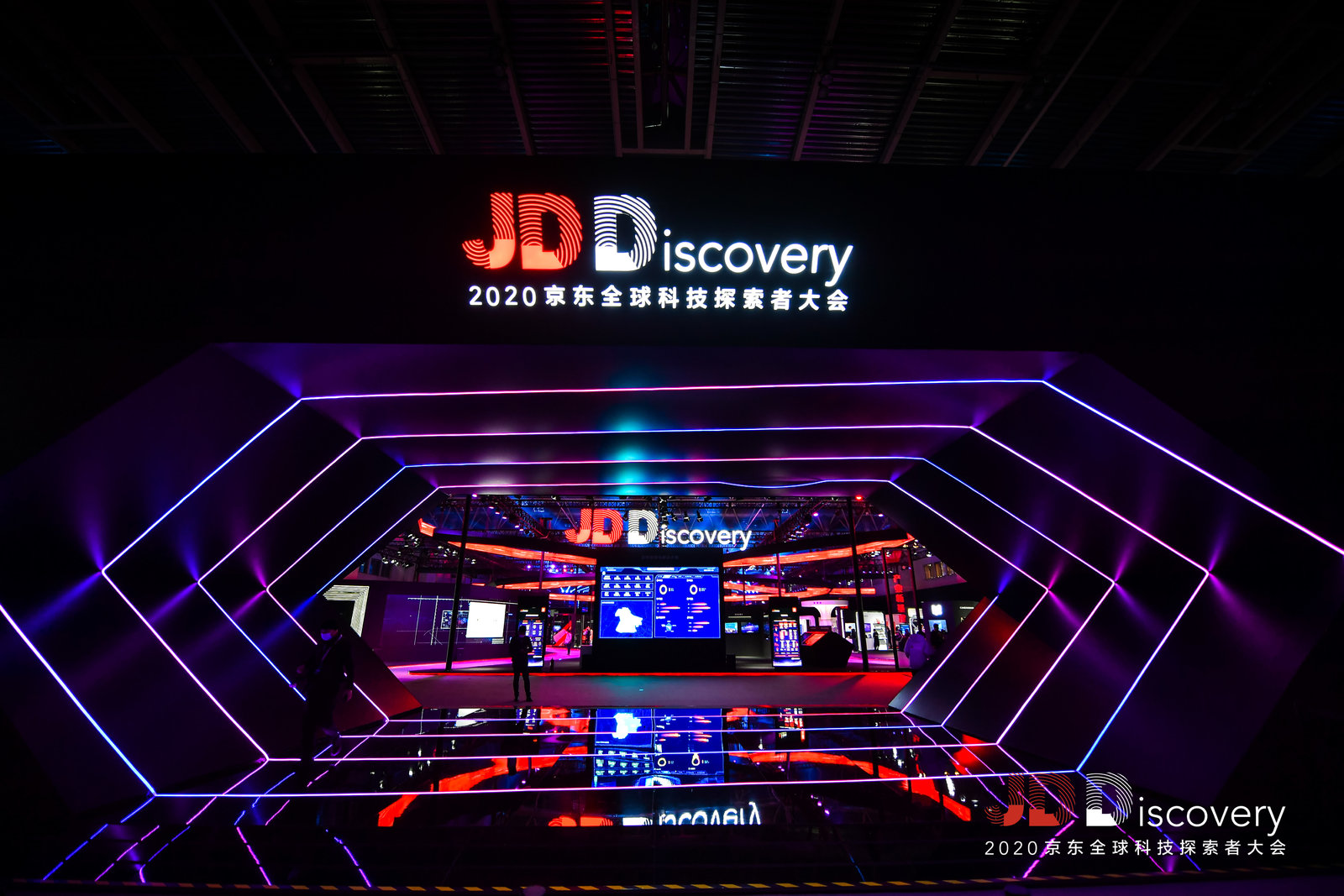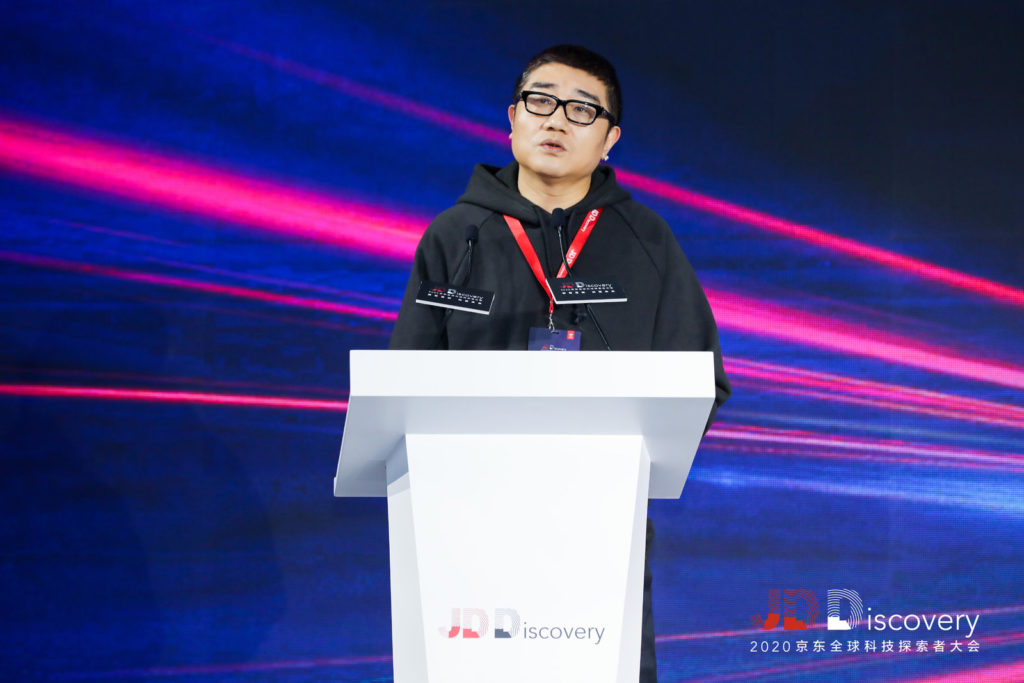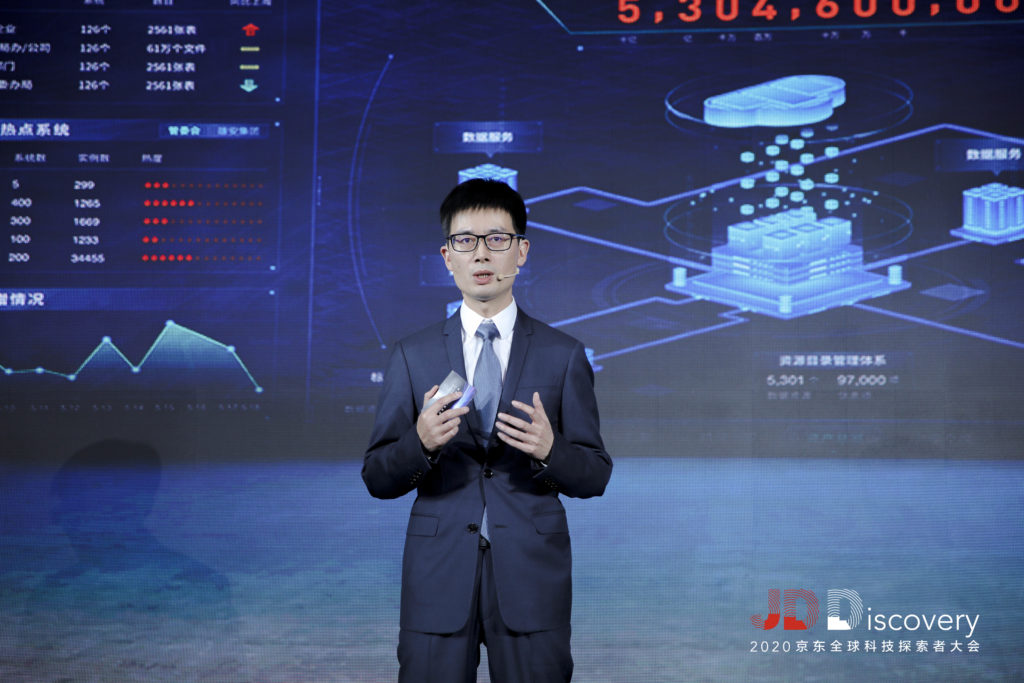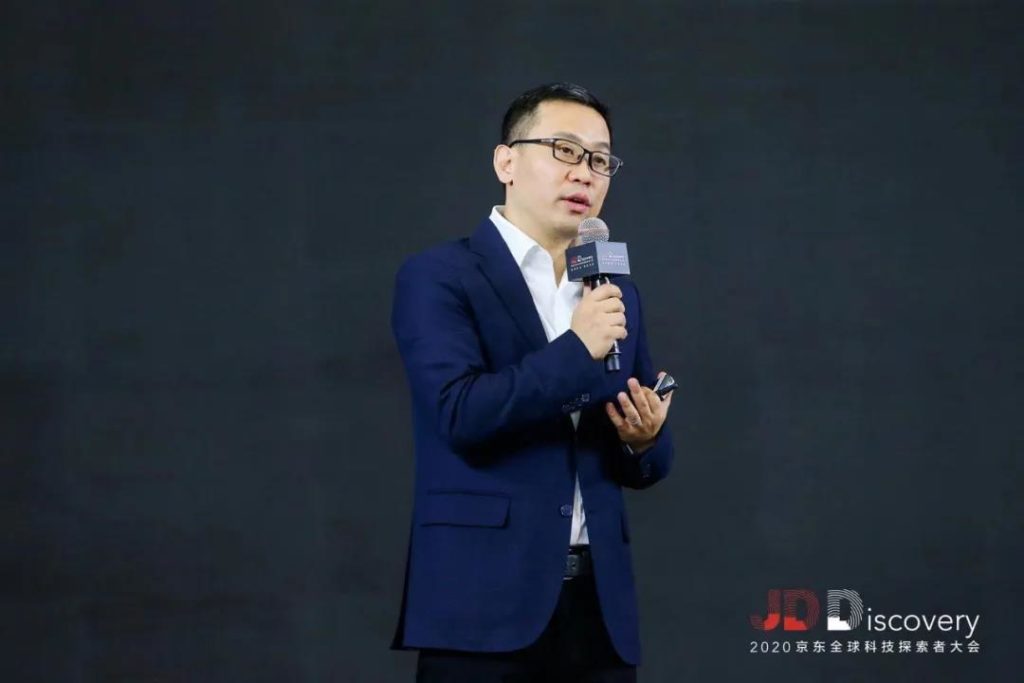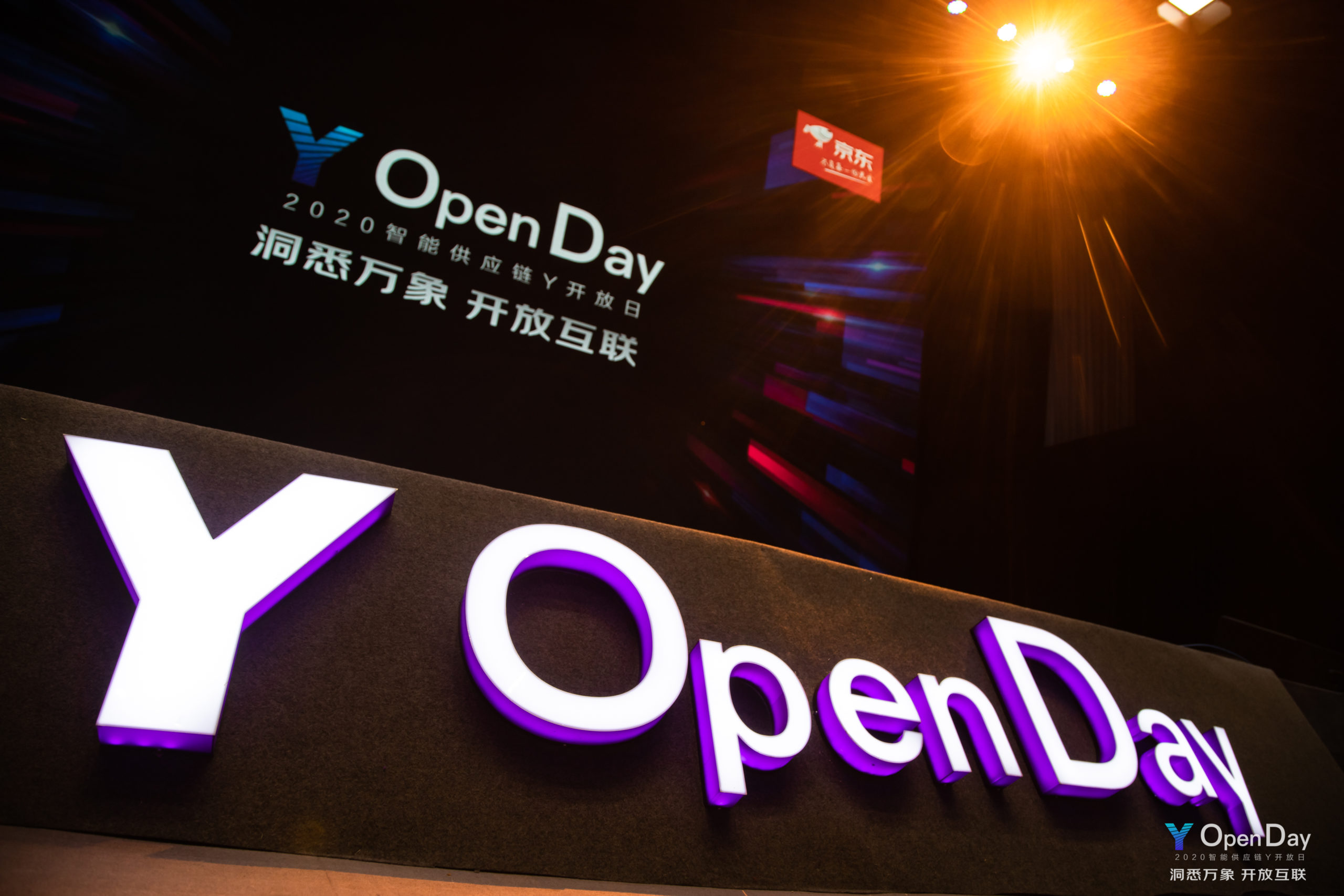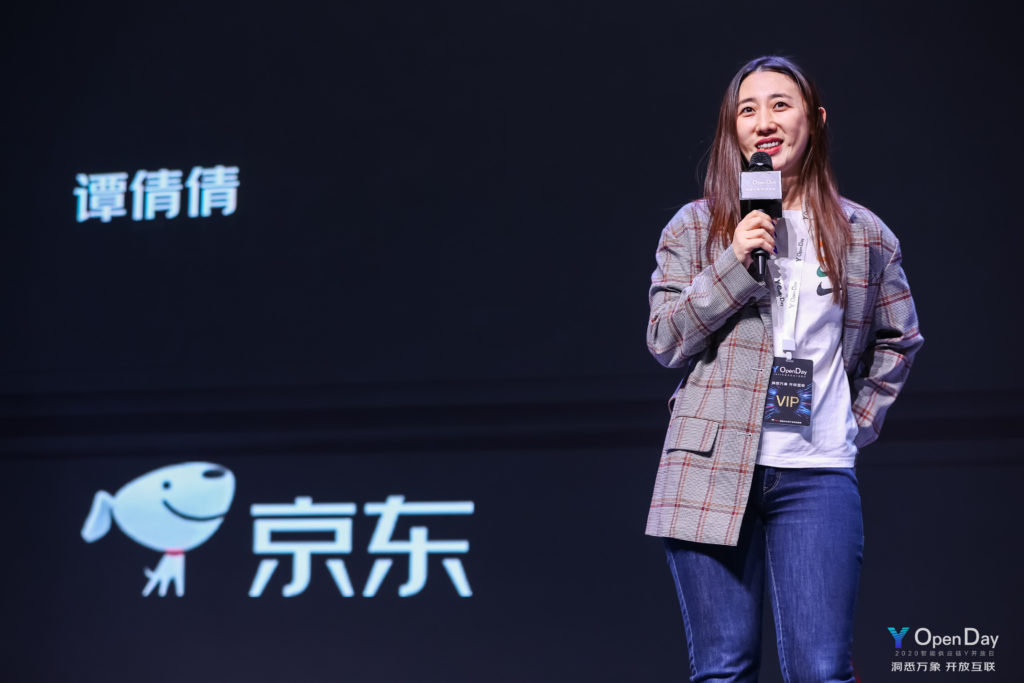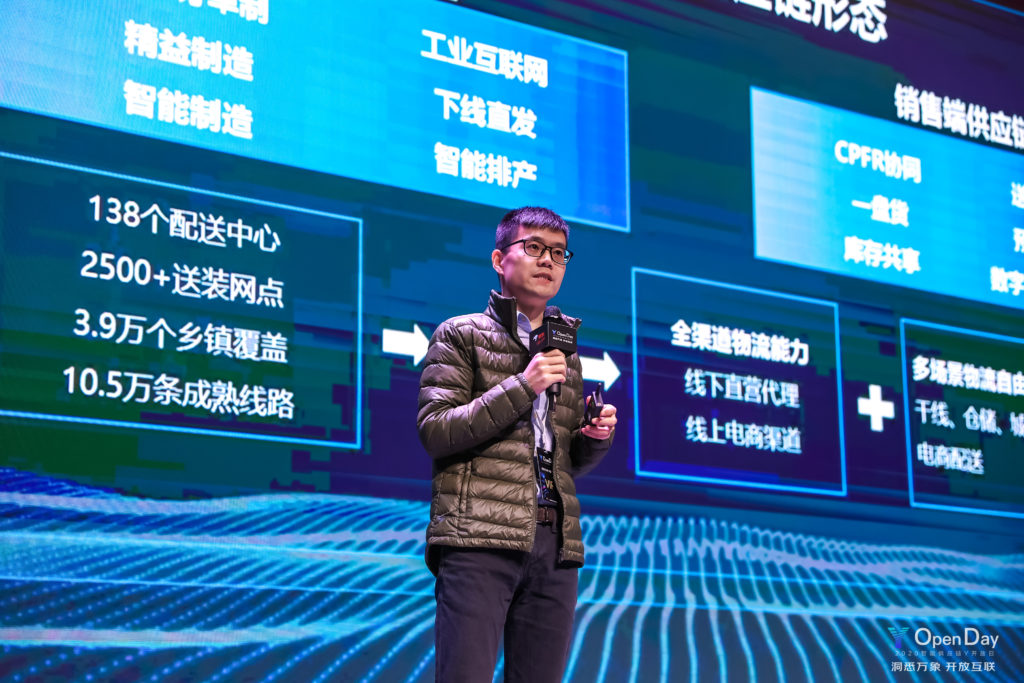by Hui Zhang
JD started selling automotive supplies in 2012, and has been cooperating with many brands since then, including Mobil, Michelin, Pirelli, Castrol, Dunlop, Shell, Bridgestone, Continental and others. With more and more consumers going online to buy automotive supplies, the question of how to ensure a high-quality customer experience has become a key priority for JD.
As China’s auto market undergoes rapid development, many online platforms are trying to take advantage of the huge potential of the market. However, very few platforms have figured out how to stand out, due to the unique nature of automobile consumption.
Unlike most one-time purchases that are paid for and delivered at the same time, the consumption and usage of cars is a long-term process, with repair and maintenance accompanying the automobile’s entire lifecycle.
Most internet platforms are limited by their own capabilities, focusing only on the sales process, making it difficult for them to provide sustainable services to consumers in the long run. For those internet platforms that do focus on the automotive aftermarket, with services such as repair and maintenance, most do not have front-end sales capabilities and supply chain advantages, making it difficult for them to be recognized by consumers.
In contrast is JD Auto, which stands out by leveraging its supply chain capabilities and platform’s advantages.
“JD’s auto business has covered the full life cycle from automobile parts and accessories purchasing, maintenance services, to new car and motorcycle sales,” said Yan Qing, general manager of JD Auto.
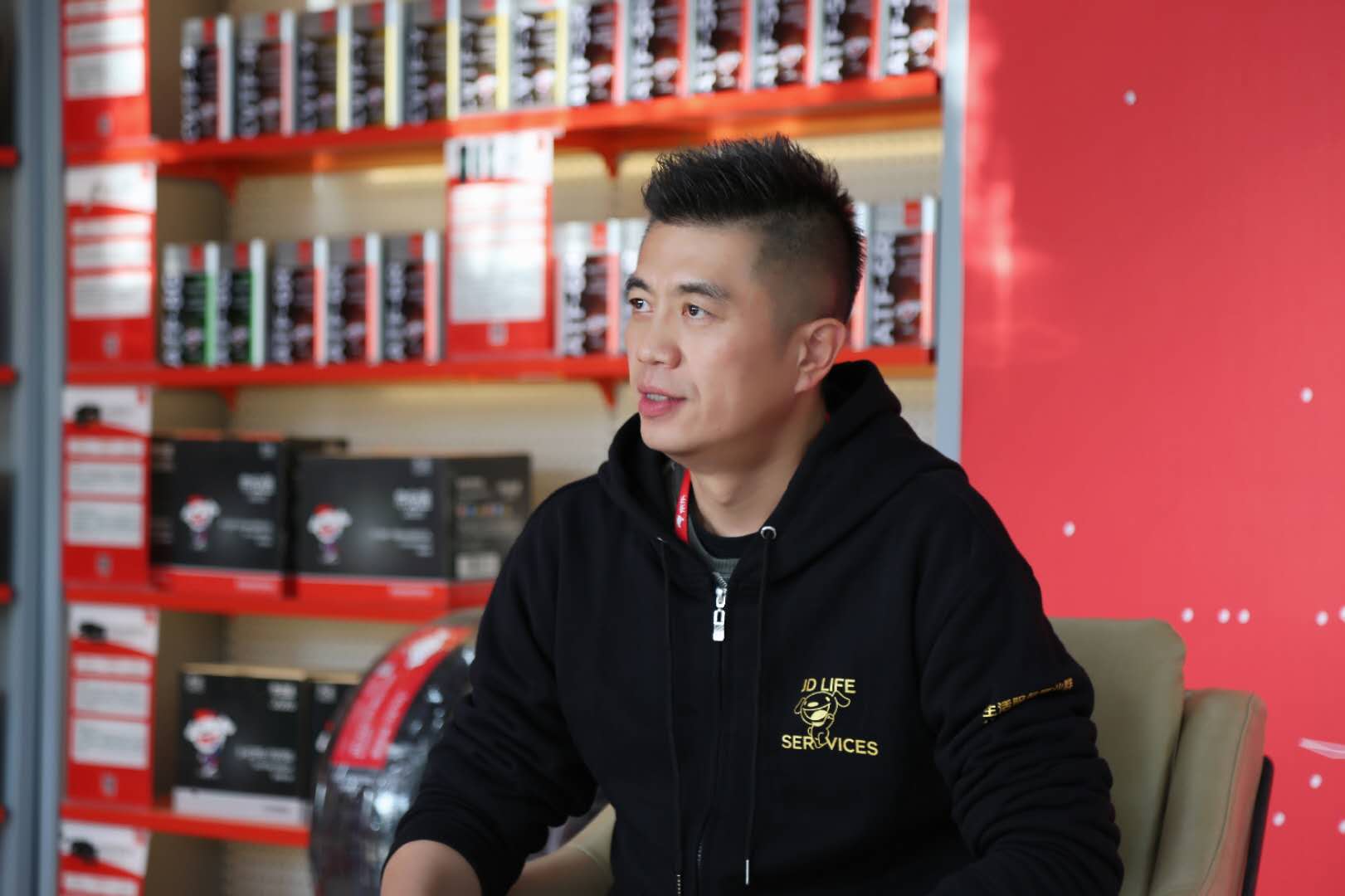
Yan Qing, General Manager of JD Auto
Parts and Accessories
Earlier this year JD called on more than 20 leading automobile supply brands, which includes 3M, Philips and Johnson & Johnson, to join the “Auto Supply Quality Alliance” to provide customers with peace of mind by ensuring the quality of products including car purifiers, foot mats, seat cushions, invisible car garments, protective film for cars, car cleaning solutions and more.
JD has become a trusted platform for consumers to buy automotive supplies by always placing consumers at the center. During this year’s Singles Day Grand Promotion from November 1st-11th, sales of products tagged as high-quality by JD increased by 247% year-on-year, with in-vehicle appliances, car charging equipment, and invisible garments increasing by 5.6 times, 4.5 times, and 2.9 times respectively year-on-year.
In addition to directly working with individual automobile brands, JD has also eyed China’s industrial belt, which gathers a large number of manufacturers. JD signed an agreement with Tiantai county of Zhejiang province, which is one of China’s main production zones for car accessories, to deepen cooperation on the marketing and branding for Tiantai’s car accessories manufacturers.
Under the agreement, JD will work closely with Tiantai’s over 200 manufacturers, offering direct sales of various products at factory prices to customers across China both online and offline. To help manufacturers better understand consumers’ needs, JD will frequently deliver customer insights and consumption forecasts based on JD’s big data and R&D capacities, with the goal of facilitating more C2M (Customer-to-Manufacturer) products—and ultimately increase sales and brand awareness.
JD is also exploring innovative cooperation with automobile brands, such as FAW Toyota. FAW Toyota not only launched a flagship store on JD.com, but also allows consumers in China to purchase and schedule maintenance services online and then bring their vehicles to FAW Toyota’s offline service centers at their convenience through the cooperation.
JD Car Club:O+O
Selling auto parts is only the first step for JD to compete for a share of the automotive market. Since buying auto parts online is always followed by offline installation demands, JD stepped into the offline maintenance field in 2018 to bring omnichannel services to people across China.
As measured in September 2020, China has become one of the largest automotive markets in the world with over 275 million cars. The average age of cars in China is about 4.9 years, which is getting closer to the 5 years’ threshold when car maintenance demand will surge, as experience shows from the international market, ushering in the boom of the trillions-of-yuan worth automotive aftermarket.
Observing the industrial trend as well as aiming to bring omnichannel services integrating both car part sales and maintenance services to consumers, JD launched an offline automotive initiative called JD Auto Service, known in Chinese as Jingdong Jingche Hui, (京车会,literally means JD Car Club) in 2018. Through JD Auto Service, customers can buy auto parts or maintenance services on JD.com, and then go to a JD Auto Service location for installation. To ensure high-quality service, each of the offline stores is screened to meet JD’s strict standards before joining the network.
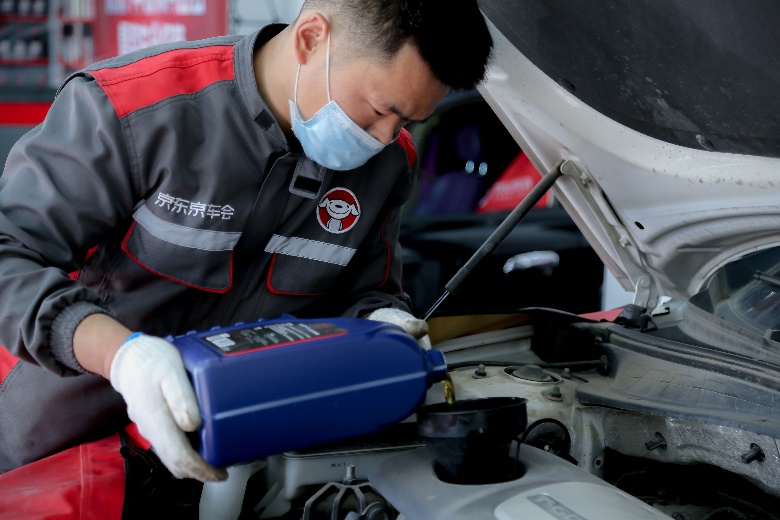
Maintenance Workers Working in JD Auto Service Store
“It’s not enough to only authorize JD’s brand to franchised offline stores,” said Qing. “Branding authorization is only the first step, and it’s more important for both JD and offline maintenance stores to work together to improve maintenance services, enhance operation efficiency and facilitate the intelligent transformation of offline stores.
Through the cooperation, JD will provide standardized trainings to technicians on maintenance skills and offer preferential policies of car parts ordering through JD’s B2B platform, JD Cloud Match (Chinese name:京东云配), in a bid to guarantee quality and ensure timely delivery speed. In addition, JD will also provide technology support by introducing a CRM (Customer Relationship Management) system to help offline store manage their inventory and consumers intelligently.
At present, JD has opened over 1,200 car maintenance stores that integrate online and offline services in 200 cities across China. Car parts for these stores are supplied from JD’s B2B auto part selling platform that ensure low purchasing cost and high delivery efficiency for offline stores.
Li Songhai is the owner of one of JD Auto Service’s franchised stores which is called JD Auto Service Qingran Store, located in Beijing’s Daxing district. Covering an area of 300 square meters, Li’s store joined with JD Auto Service in 2018, and was the first one in Beijing to join the initiative.
JD Auto Service Qingran Store
“I found the innovative initiative of JD accidently, which I believed it to be a promising one,” said Li when asked why he had chosen to cooperate with JD Auto Service. “JD is a trustworthy and reliable platform, and I always shopped on JD, such as buying home appliances. I decided to have a try by joining the initiative to increase profits of my store.”
Thanks to JD’s technology support, the intelligent inventory management system will notify offline stores when replenishment is necessary in a timely manner, and will help offline store to digest the overwhelming inventory by recommending different promotional activities to them.
Now the store has embraced inspiring results and it already opened another store thanks to the additional traffic brought by JD, which is recognized as a guarantee of quality and authenticity.
“JD helped us set up standardized services while introducing traffic from online to offline, keeping us consciously moving forward,” Li said. “There are several key elements to improve our sales. First and foremost, professional skills are very important to auto maintenance. Secondly, offering good consumer services is also significant for us in maintaining consumer relationship.”
During this year’s Singles Day period, sales of automobile services grew rapidly as JD Auto Service is widely recognized by consumers for its efficient, transparent and highly standardized maintenance services. The order number of maintenance packages sold through JD increased by 220 times and sales increased by 3 times compared with the same period last year.
“The automotive aftermarket is an industry that emphasizes maintenance skills and services, so for the automobile industry, online and offline integration will coexist for a long time,” Qing said.
Cloud Match
Auto parts supply chain is one of the most complex supply chain systems. The complex distribution hierarchy and fragmented marketing models have created a serious information barrier between the suppliers of auto parts at the top and consumers at the bottom. The long-term complex situation also resulted in high inventory and turnover costs for brands and suppliers, and the frustration of car owners at auto maintenance stores who can’t find the right parts.
To address the contradictory situation in China’s auto aftermarket, JD announced plans to set up a JD Cloud Match to directly connect auto parts manufacturers, brands and dealers with offline maintenance stores, so as to promote information transparency and bring high-quality products to car owners in a timely manner leveraging JD’s logistics capabilities. Thus JD successfully built a B2B2C closed loop of auto business in China.
So far, JD Cloud Match has offered services to tens of thousands of maintenance stores in 30 provinces, municipalities and autonomous regions across China.
In 2019, JD Auto launched a new network to optimize the supply chain of spare auto parts. The network, Cloud Match Alliance (Chinese name:云配联盟), currently covers over 13,000 registered merchants and has more than 1,500 core members. Through the network, JD can help better match manufacturers and brands with dealers. At same time, offline dealers can also choose to join JD Cloud Match so as to precisely access maintenance stores which are in need of high-quality spare auto parts.
In addition to setting up platforms to connect every segment of the auto supply chain, JD also developed its own brand, Jauto (京安途, literally means JD’s safe trip), to enhance its own supply chain capabilities. Jauto is the first such brand in the industry to cover engine oil, tires, accessories and more. The products are sold by nearly 500 dealers and serve over 10 million car owners.
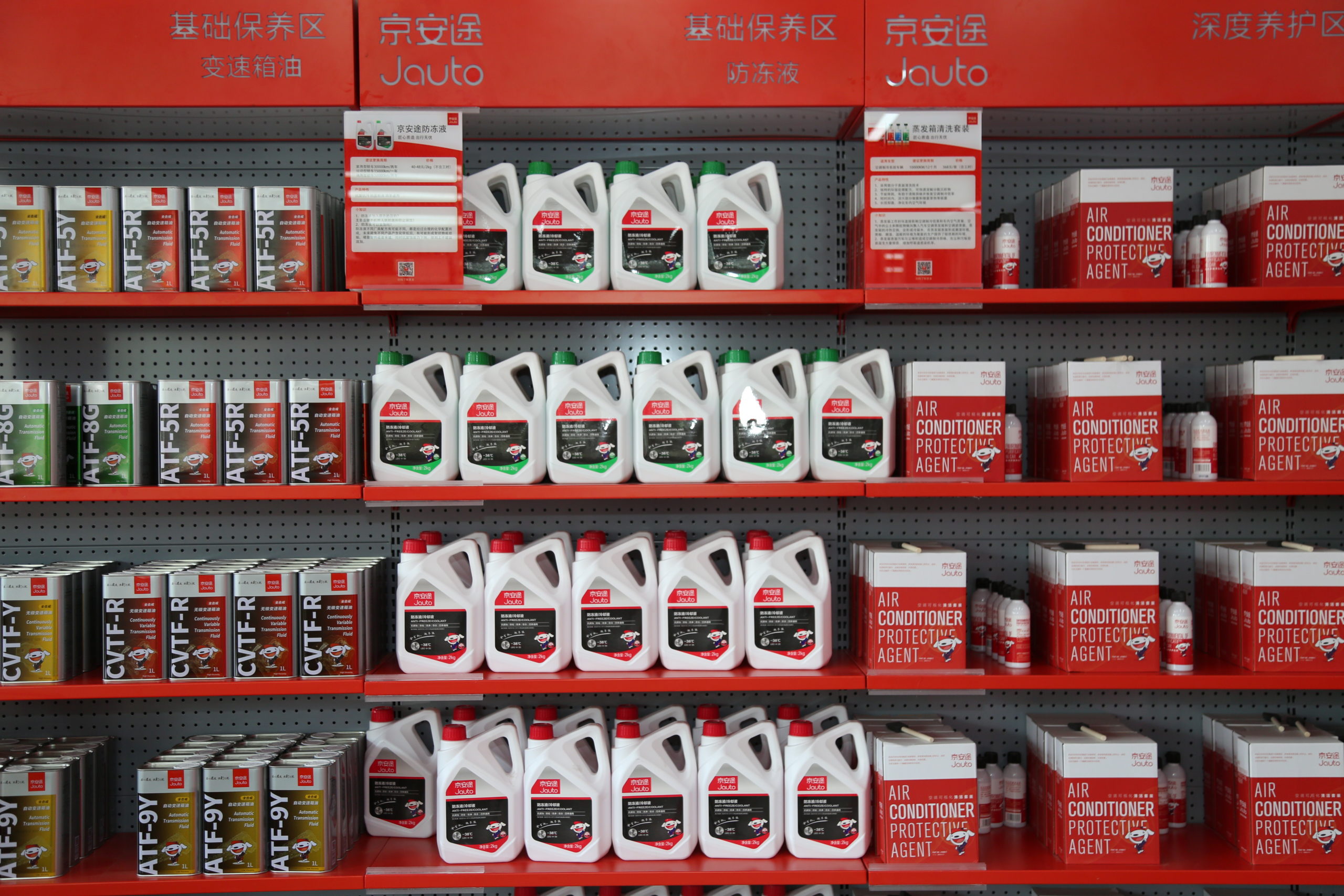
Jauto Products
Becoming Car Dealer
JD has not limited itself within only selling auto parts and offering maintenance services—it is ambitious in its aims to cover the whole life cycle of automobiles. JD started selling motorcycles in 2015 after it found that more than 2 million consumers go to JD.com every year to search or buy motorcycles and peripheral equipment. To further complete its auto business, JD started selling cars in 2018, and has now extended cooperation with FAW-Volkswagen Audi, SAIC Volkswagen, Dongfeng Nissan, Beijing Hyundai, Haima and more
Buying motorcycles online is becoming a trend for Chinese consumers. During the Singles Day promotion, sales of motorcycles on JD increased by 103% year-on-year, with Wuyang-Honda, YAMAHA, Benelli , CFMOTO, Cyclone and other international and domestic first-tier brands occupying the top five of the sales list.
“The development of JD’s auto business is similar to a fast-moving car, with the online sales business of vehicles, motorcycles, maintenance supplies, and auto parts as the front end, the JD Auto Service as the body, and the B2B supply chain as the back end,” said Qing.
Integrating JD’s B2B2C automobile business and providing omnichannel maintenance services is only part of JD’s trial in the auto market. In the future, JD Auto aims to develop intelligent solutions to empower the whole industry.
“In JD Auto’s vision, in the future, the online product transaction and the offline store service can be seamlessly integrated,” Qing said. “From buying a car to using it and repairing it, everything will be digital and intelligent.”


